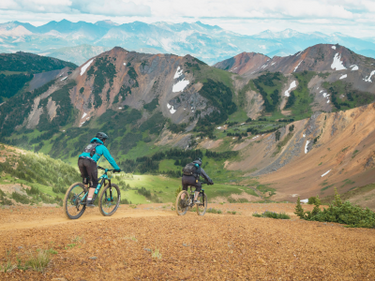Guide to Taking Care of Your Camping Gear
It might be tempting to just shove everything into the garage after a long camping trip, but a few steps to take care of your gear will keep it lasting much longer. Here are 5 easy tips that will keep both you and your gear happy.
#1: Make sure EVERYTHING is dry.
That damp sock. The tent that got just a bit of drizzling rain on it. Even sleeping bags retain a bit of moisture throughout the night just by having contact with our skin. Make sure to hang ALL of those items up and make sure they are completely dry before storing. If it’s an annex or canopy, set those up in the garage or somewhere dry to ensure they’re dry as well before breaking down.
Pro Tip: If its a dry day, set up your tent outside and lay the rainfly out for an hour or two- it shouldn’t take long for it to dry and UV rays help kill mold + mildew.
If its a wet day or you don’t have a backyard, set up your tent in an open space like your living room and use paracord between two doors (stopper knot on each end, placed over the door and then close the door to keep it up) to create a clothesline to hang the rainfly on
#2: Clean, clean, clean.
You may not want to do this the first day you’re back, but be aware that it should be put on your to-do list for something to do pretty soon after the trip. It’s cleaning.
We don’t mean laundry, because you probably already have dumped everything from your backpack into the washer already. So let’s be specific…
Tents, shelters, etc. Did they get wet? Did a bird poo on them? Did they get mud scuffs on them? Did a kiddo or slightly intoxicated friend smear their hands on it after dinner? If you answered “Yes” to any of the above, you’re going to need to get out a brush, some warm water with soap, and give your equipment a good clean.
What about food utensils, coffee mugs, stoves, etc? Since food prep is highly prone to contamination, all of your utensils should be thoroughly cleaned and dried after a trip.
Pro Tip: Dry your gear after cleaning with a chamois, then go over with paper towels and finish by leaving it with a fan to air out.
#3: Restock Supplies
Whether it’s food items, garbage bags, headlamp batteries, fuel, blister kits, etc. make sure to have a list going in your gear storage area on what needs to be replenished. Try to do this asap, as it’s too easy to forget and then leave you scrambling at the last minute before your next trip…or sending out that group text like…
“Hey, I totally forgot XYZ. Anyone have an extra…? I’ll buy the beer after.”
Pro Tip: Check your propane tanks, if any are empty (you should always confirm before disposing) look for ways to properly dispose. A common one is the 1lb mini propane tank (green). If you have an empty one, do not simply throw it away - they can be hazardous. Look for municipal household hazardous waste events in your area, they will make sure canisters are safely disposed of. If you have an empty high-performance propane/isobutane blend fuel canister (usually the smaller ones for backpacking), many recycling centers will take them if they are empty and a hole has been punched in the canister. Check to make sure yours is steel and fits with local recycling center guidance.
#4: Schedule repairs or fix damaged items ASAP.
Remember that one time your sleeping pad deflated? Stuck zippers? Loose tent poles? You meant to fix it…but it totally slipped your mind and now you’re headed out for your next camping trip. We’ve all been there. Make sure to fix any equipment that doesn’t perform as it’s supposed to quickly.
If the item seems to be damaged or in need of a replacement strap, etc. reach out to the product manufacturer and sometimes there could be a warranty or free repair!
Pro Tip: Have a broken pole? Check out Tent Pole Technology to help you get expert repairs fast.
#5: Store your gear properly.
If everything is clean and dry, and you’re breaking it down for a winter slumber, make sure to be kind to your gear. Make sure it’s comfortable, tuck it in, and read it a bedtime story.
Sleeping Bags- You’ll want to store these uncompressed, hanging in a narrow space. That means DON’T store them in that cute little bag that came with it for camping. Look for a long garment bag- some even come with one for this exact purpose.
Sleeping Pads- Just like sleeping bags, you’ll want to store them unrolled, flat, with valves open.
Tents- Not a whole lot of options here, but most should be able to be broken down and stored in the bag that they came in. Just make sure it’s clean and dry.
Cooking Gear- for any cooking gear, snack storage, etc. assuming it’s all clean and dry, find a nice bin that you can easily store it all in and label it for ease of locating.
Pro Tip: When it comes to storing gear, check out places like Target or The Container Store. There are tons of shelves, cubbies, hooks, and hangers that can save you a ton of space, organize your gear, AND will look #sopro.
If you're looking to upgrade your camping set up, checkout our camping gear collection here.



